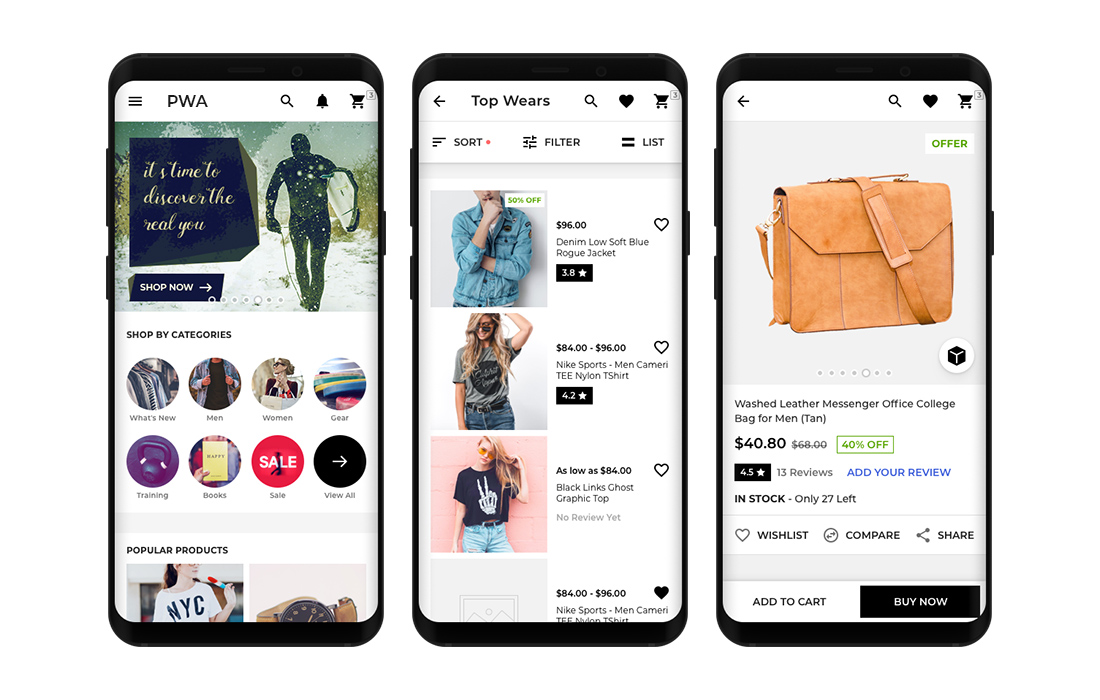
Revolutionizing Mobile User Experiences: The Power of Progressive Web Apps (PWAs)
In a digital era where technology is evolving at an unprecedented pace, Progressive Web Apps (PWAs) are emerging as a game-changer, bridging the gap between web and mobile experiences. These versatile applications combine the best of both worlds, offering a seamless, user-friendly, and highly efficient way to interact with online content. In this blog, we will delve into the world of PWAs, exploring their benefits, development process, and frequently asked questions.
# What are Progressive Web Apps (PWAs)?
Progressive Web Apps redefine web experiences, delivering a user-friendly app-like encounter. They are designed to work smoothly across various devices and screen sizes, providing a consistent and engaging experience whether accessed on a desktop, tablet, or smartphone. PWAs leverage modern web technologies to deliver features typically associated with native mobile apps, such as offline access, push notifications, and high performance.
# Benefits of PWAs
1. Cross-Platform Compatibility
PWAs eliminate the need to develop separate applications for different platforms (e.g., iOS and Android). They can run on any web browser, making them accessible to a broad audience without the constraints of device-specific app stores.
2. Offline Functionality
An exceptional characteristic of PWAs is their remarkable capability to seamlessly function offline, ensuring uninterrupted user experiences even when connectivity is scarce or unreliable . They can cache essential resources, enabling users to access content even when they have limited or no internet connectivity. This feature is particularly valuable for users in areas with unreliable network connections.
3. Improved Performance
PWAs are known for their fast loading times and smooth interactions. They leverage technologies like service workers to pre-cache content, reducing load times and providing a snappy user experience.
4. Responsive Design
PWAs are crafted for adaptability, effortlessly conforming to various screen dimensions and orientations, ensuring a consistent user experience . This ensures that users have a consistent and visually pleasing experience, regardless of the device they are using.

Progressive Web App Template
5. Push Notifications
Enhance user engagement with Progressive Web Apps (PWAs), which have the ability to deliver push notifications, akin to native applications. This allows businesses to engage with their audience in real-time, sending updates, reminders, and personalized messages.
6. Discoverability
Incorporating Progressive Web Apps (PWAs) into your digital strategy allows for seamless indexing by search engines, enabling effortless discovery through web searches. This innovative approach can significantly expand businesses' reach, eliminating the necessity for users to download and install an application.
# Development of PWAs
Creating a PWA involves several key steps:
1. Choose the Right Technology Stack
Select the appropriate web development technologies and frameworks for your PWA. Common choices include HTML, CSS, JavaScript, and libraries like React or Angular.

Progressive Web App Technology Stack
2. Develop a Responsive Design
Ensure that your PWA is designed to adapt to various screen sizes and orientations. This is crucial for providing a consistent user experience.
3. Implement Service Workers
Service workers are JavaScript files that enable caching and offline functionality. They play a vital role in making PWAs work offline.
4. Add a Web App Manifest
A web app manifest is a JSON file that provides information about your PWA, such as its name, icon, and color scheme. It helps the browser understand how to display and interact with your app.
5. Test and Optimize
Thoroughly test your PWA on different devices and browsers to ensure compatibility and performance. Optimize your code and assets to improve loading times.
6. Deploy and Promote
Host your PWA on a web server and make it accessible to users. Promote your PWA through various channels to attract users and encourage adoption.
# Frequently Asked Questions
Q1. Are PWAs compatible with all web browsers?
A1. PWAs are designed to work across various web browsers, including Chrome, Firefox, Edge, and Safari. However, some advanced features may have limited support in certain browsers.
Q2. Can PWAs be installed on a user's device?
A2. Yes, PWAs can be installed on a user's device as a shortcut or app icon. When a user visits a PWA repeatedly, they are often prompted to install it for quick access.
Q3. Do PWAs require an internet connection to function?
A3. PWAs are designed to work offline to some extent, thanks to service workers and caching. However, their full functionality may be limited without an internet connection.
Q4. How do push notifications work in PWAs?
A4. Push notifications in PWAs are sent through service workers and can be triggered by events or updates on the server. Users can receive notifications even when the PWA is not open in their browser.
Q5. Are PWAs secure?
A5. PWAs are subject to the same security standards as regular websites. They use HTTPS to encrypt data transmission, ensuring the privacy and security of user information.
Q6. Can PWAs access device features like cameras and GPS?
A6. Yes, PWAs can access certain device features through web APIs, but they do so with user consent. This ensures that user privacy and security are maintained.
# Conclusion
Progressive Web Apps represent a significant evolution in the world of web and mobile applications. They offer a versatile and efficient way for businesses and developers to reach a wide audience with a consistent and engaging user experience. With the benefits of cross-platform compatibility, offline functionality, and responsive design, PWAs are poised to continue bridging the gap between web and mobile in the digital landscape. As technology continues to advance, PWAs will likely play an even more prominent role in the way we interact with online content.
